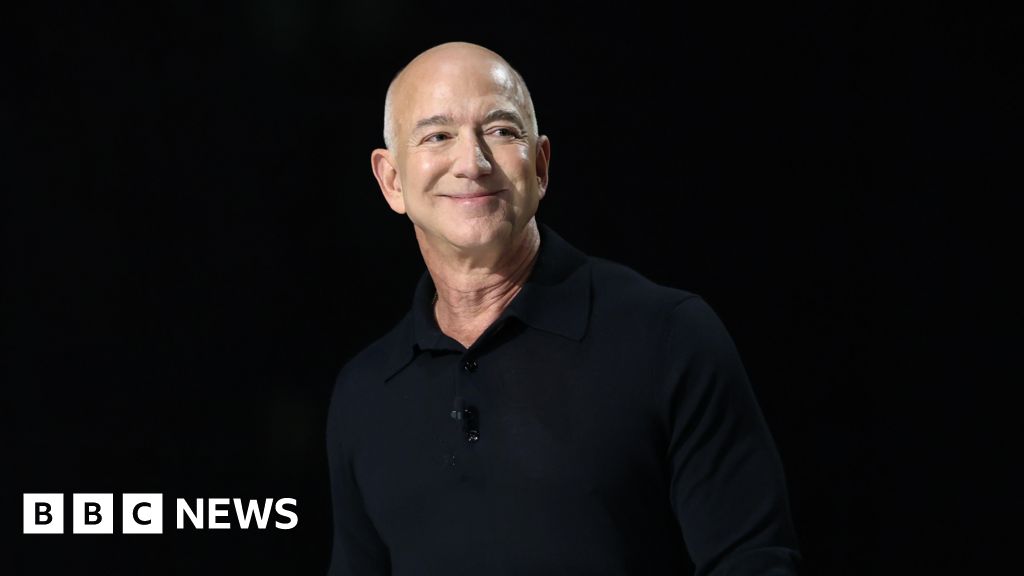Tech
CES: Sony Group Deepens Investments in Booming Anime Sector

Sony Group unveiled a new focus to its business strategy on Monday at the annual Consumer Electronics Show in Las Vegas, and it was an area that sits somewhat adjacent to all of the things the Japanese conglomerate has long been famous for — electronics, gaming, Hollywood moviemaking and a richly valued music catalog. The firm suggested it was pinning a sizable share of its future growth on anime, the formerly niche content category that continues to impress analysts as one of Japan’s most lucrative cultural exports.
Sony has been putting the pieces together for a major emphasis on anime for several years, but the high-profile presentation at CES marked the first time the group publicly underscored just how much firepower it plans to bring to bear on the sector. Joining Sony president and COO Hiroki Totoki on stage in Vegas were Rahul Purini, president of Sony’s anime specialty streamer Crunchyroll, and Atsuhiro Iwakami, president of Aniplex, the company’s pillar anime studio at home in Japan. Both units have been on a tear in recent years. Crunchyroll’s subscriber base grew from 3 million in 2020 — when Sony announced the acquisition of the service from AT&T for $1.2 billion — to over 15 million subscribers as of last July.
Crunchyroll, Aniplex and Sony Pictures will collaborate later this year on the North American and international release of Demon Slayer: Kimetsu no Yaiba Infinity Castle, a trilogy of films that concludes what is currently the world’s most bankable anime franchise. The previous film in the series, Demon Slayer: Mugen Train, was released during the challenges of the pandemic in 2020-2021 but earned $49.5 million in North America and $473 million worldwide — the largest total ever for a Japanese animation.
“Since the previous release, the global fan base for the Demon Slayer IP has grown significantly, so we are hopeful that the new film will exceed that performance in overseas markets,” Iwakami told The Hollywood Reporter from Tokyo ahead of his presentation at CES. “There are many more opportunities for Sony companies to collaborate around anime at a global scale,” he added.
Sony’s bullishness on anime is backed by an international surge of interest in Japanese pop culture — and anime in particular. From 2013 to 2023, the global market for anime more than doubled to $22 billion (3.3 trillion yen), according to the Association of Japanese Animations. Once the domain of subculture superfans, anime has become a mainstay of Gen Z youth culture across the globe, analysts note.
Crunchyroll’s research has found that 42 percent of Gen Z fans in the U.S. say they watch anime weekly, while 60 percent of Gen Z and Gen Alpha consumers in Brazil report watching it multiple times a week.
“It is not only a young audience but a highly engaged one,” says Purini.
Since 2017, Crunchyroll has hosted an annual anime awards show to celebrate the industry’s output. In a further indication of the sector’s growing pop cultural cache, anime-fan entertainers who participated in last year’s ceremony in Tokyo included multi-Grammy winner Megan Thee Stallion, Korean director Bong Joon-ho (Parasite), Oscar-winning filmmaking duo Phil Lord and Christopher Miller (Spider-Man: Across the Spider-Verse), and NFL star DeMarcus Lawrence, among others.
Investment bank Jeffries published a report in October forecasting the global anime market to grow to $60.1 billion by 2030. The sector is also a pillar of the Japanese government’s goal of generating 20 trillion yen ($130 bilion) from the country’s contents market by 2033.
“Anime is a global phenomenon with a passionate community,” Sony’s president and COO Hiroki Totoki told THR. “Sony is committed to enriching the fan experience, by transforming fan-favorite stories into anime and bringing them to a worldwide audience.”
With its roots in Tokyo’s creative subculture, anime aligns with the Japanese tech giant’s longstanding and ongoing strategy of evolving from a devices maker into a global content powerhouse that leverages the vast IP of its film, TV, music and gaming holdings.
“Lovable characters and intellectual property can live for 30, 50 or 100 years,” Sony CEO Kenichiro Yoshida said last year. “That’s something we want to make investment in for sustainable growth.”
From the stage at CES, Purini announced that Crunchyroll and Aniplex are collaborating to create an anime series based on Sony’s blockbuster samurai adventure PlayStation game Ghost of Tsushima. A feature film adaptation of the property is also under development at Sony Pictures. The Ghost of Tsushima anime series will draw creative resources from Sony Music, PlayStation Studios, Crunchyroll and Aniplex’s anime studios in Tokyo. The adaptations follow related hits like the HBO series The Last of Us, based on the blockbuster PlayStation games.
The anime emphasis is evident in Sony’s recent investment activity. In December, the company spent $320 million to increase its stake to 10 percent in Kadokawa, one of Japan’s leading producers of manga, anime and games, including the hit Elden Ring franchise. The two companies pledged to strengthen their collaboration and joint investments in gaming and content.
Sony has plenty of company in pursuing anime’s growing potency across markets. Netflix, Disney and Prime Video all have invested heavily to access to the finite supply of top anime titles and talent (Netflix has said that about half of its 283 million subscribers worldwide have viewed anime). But Purini says Crunchyroll is confident in the home turf advantage Sony’s backing gives the brand in Japan, and the company views its competitors’ efforts to convert more lay viewers into anime fans as a collective gain.
“We are very bullish about the overall growth of anime and what that means for us,” he says.
Crunchyroll’s access to mainstream U.S. consumers got a boost last year thanks to deals with Amazon Prime Video and Roku, which brought the service to those platforms as an a la carte channel. The company positions its core streaming offerings, which come in both advertising and subscription tiers, as the central hub around which its other services spin. Aiming to be “everything for the anime fan, rather than everything to everyone” like the scaled, generalist streamers, the Crunchyroll app spans anime gaming, merchandise and music streaming services. The company is also a constant presence at anime culture’s many meet-ups and events across the globe.
At CES on Monday, Crunchyroll added to its suite of offerings by unveiling a new app for reading Japanese manga, which will be offered to subscribers as a premium add-on.
“Crunchyroll Manga will be a premiere online manga app that carries catalogs from renowned publishers, offering fans unparalleled access to the visionary works that inspire the anime we love,” Purini says.
He adds: “We have a unique opportunity to collaborate across all of the Sony Group companies to serve anime fans and creators.”










